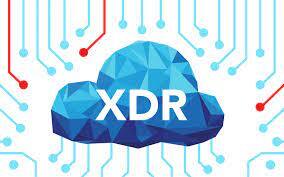XDR unifies EDR, MDR, and some aspects of UEBA to give security teams the visibility and context they need to effectively protect their organization’s IT infrastructure. It enables them to identify cyber threats more efficiently.
Threat actors often evade detection by hiding in blind spots created by siloed point solutions. XDR centralizes alerts to provide a holistic attack view and correlates contextual information to surface fewer, higher-priority incidents.
Behavioral Analysis
Because cyber dangers are everywhere, a sound system is vital to prevent invasions. Using the XDR security platform is one method. Thus, we can understand what is XDR security and how it works. XDR is a single unified security platform that combines traditional siloed security solutions such as endpoint detection and response (EDR), network traffic analysis (NTA), and security information and event management (SIEM). By combining these functions into one solution, XDR eliminates the redundant tasks that security teams must perform when using different tools. This allows them to uncover threats that may not be discovered by a single device or through a layered defense-in-depth approach, which relies on multiple security systems to protect individual IT systems such as the endpoint, server, network, and cloud workloads.
For a centralized security solution to deliver on its promise of better detection and response outcomes, it must provide broad visibility and depth of insight. A trustworthy XDR platform has this by leveraging advanced telemetry and threat intelligence collected across multiple security layers – email, endpoint, servers, network, and identity management, to name a few.
This rich data enables security analysts to quickly identify and take action on critical threats that could impact the business – think ransomware attacks wreak havoc in organizations’ email systems or newsworthy cyberattacks stealing sensitive information. Moreover, XDR’s automation capabilities further empower security teams by reducing the amount of manual investigation and investigation response steps that would typically be required. This ultimately results in more efficient and effective examinations and quicker threat remediation.
Threat Isolation
It can be overwhelming when security teams are flooded with thousands of alerts. XDR security can reduce this overload by grouping similar alerts and prioritizing them to immediately address the most severe threats. This can save time and resources that would have otherwise been spent handling redundant processes.
XDR security unifies threat data across an organization’s technology stack for better investigative and response capabilities. It combines security telemetry from endpoints, cloud workloads, network infrastructure, and email into one consolidated view of attacks in progress. It also supports automation to simplify analyst workflows and speed up incident response times.
Cybersecurity is often likened to an arms race between attackers and defenders. However, defending the entire network involves more than endpoint detection and response (EDR). Organizations adopting remote working and cloud systems increase their attack surface. To protect against this expansion, a unified platform is necessary.
Also read:- How to shield yourself from Instagram Scams?
Unlike EDR, XDR offers visibility into every phase of an attack, from endpoint to payload, by collecting data from all security tools and integrating it into a single engine. It can even detect stealthy threats with advanced AI and ML techniques. Look for a solution with API-centric solid integration capabilities that can query any system tool to receive additional context for analysis.
Incident Response
XDR goes beyond detecting threats to accelerating the SOC’s response. The platform combines telemetry from across the security ecosystem to identify advanced attacks in their early stages before they spread, providing greater context and eliminating the need for teams to write, tune and manage detection rules. With a unified incident view, threat scoring, and remediation suggestions, XDR enables analysts to focus on high-priority alerts for dramatic productivity gains.
Attackers are constantly evolving and eluding SOCs. The best XDR platforms have broad, integrated visibility to detect threats at every layer of the attack surface—endpoints, networks, cloud workloads, servers, email, and even identity. The platforms also can work with other systems, leveraging integration and orchestration, automation, and response (SOAR) capabilities to provide more robust defenses.
XDR is typically deployed as an on-premises solution or a managed service. Both deployment options offer advantages, but the most crucial factor is the availability of a team to monitor and respond to threats. In the case of an XDR system, this should include both a managed detection and response (MDR) partner and security operations center resources. The partners should be well-versed in XDR technology and have a proven track record of successfully protecting their customers’ environments from advanced threats. In addition, a change management policy should be in place to ensure that the XDR tool remains up to date with all available features and updates.
Data Analysis
An effective XDR security system offers broad and integrated visibility to address all parts of the IT environment, including endpoints, network traffic, cloud systems, and more. It also identifies threats that cannot be discovered by point solutions alone, including traditional EDR and security information and event management (SIEM).
Unlike a typical standalone EDR solution, XDR works with other point tools and delivers a complete security picture. This helps eliminate blind spots and enables security teams to find stealthy attacks more quickly while reducing mean time to respond (MTTR) and improving ROI.
Also read:- write for us tech
Also read:- Technology write for us
Also read:- write for us technology blogs
In addition, a robust, role-based XDR administration policy must be implemented to ensure that users receive access rights based on their specific roles and that the least privilege principle is followed. Lastly, an active high availability feature must be configured to ensure that services remain uninterrupted even if the primary XDR appliance fails to function.
Moreover, an XDR security platform should allow the administrators to implement a comprehensive change management policy and a network map application for scanning and identifying unmanaged and Internet-of-Things (IoT) devices in the network. This reduces the network’s vulnerability to hackers and prevents attackers from finding new entry points into an organization’s IT infrastructure. Then, a standard process should be set up for identifying and revocating these unauthorized devices.
Author bio:
Hello, I am a professional SEO Expert & Write for us Technology blog and submit a guest posts on different platforms- we provides a good opportunity for content writers to submit guest posts on our website. We frequently highlight and tend to showcase guests.



